Apple iPad event 2024 – 9 things we learned from the Let Loose event
Rounding up the big stories from the Apple iPad event
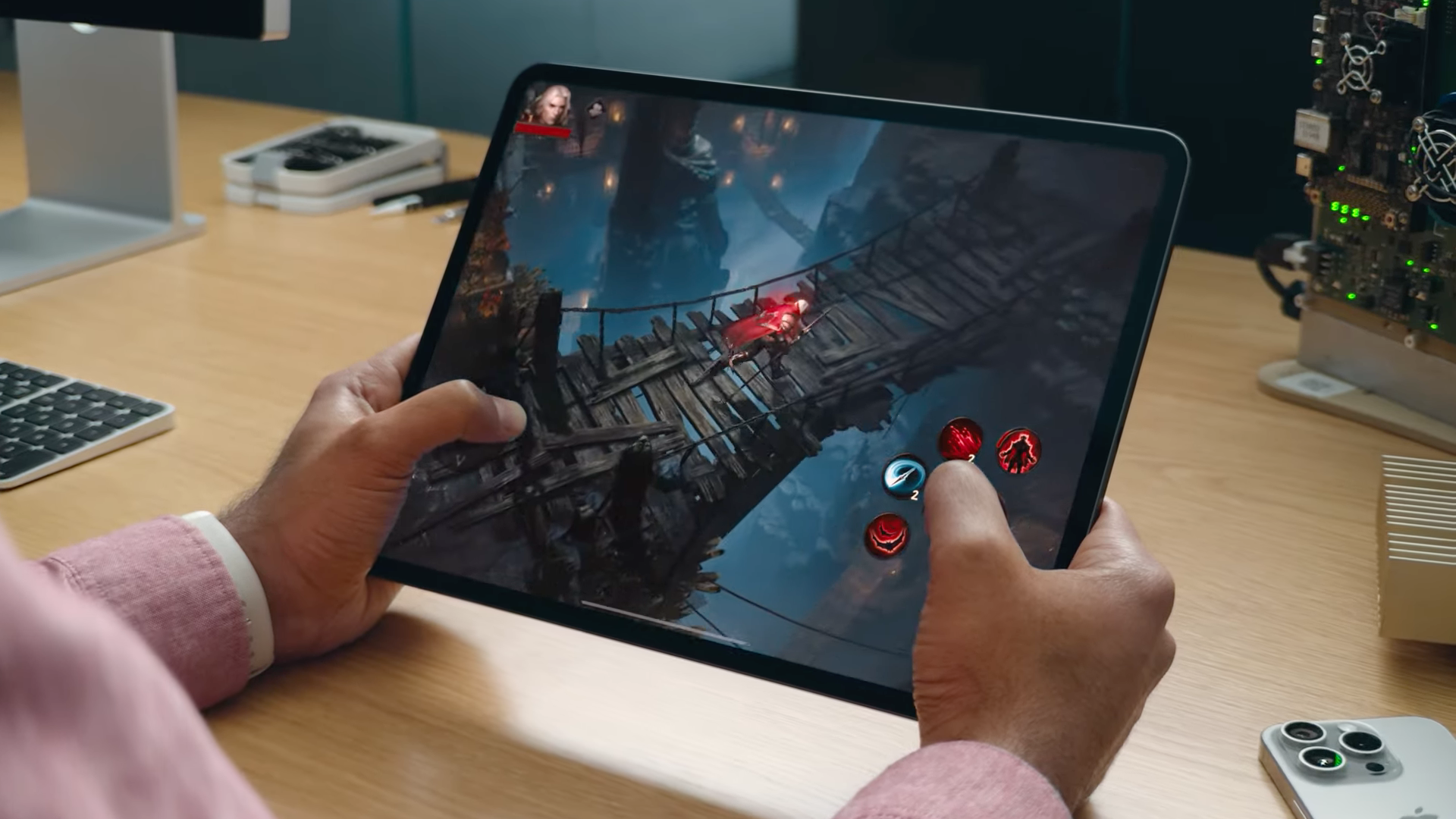
Tim Cook described today's Apple iPad event as "the biggest day for iPad since its introduction" – and hype or not, he might have a point. After all, the Let Loose event saw the launch of new iPad Airs and iPad Pros, a new Apple M4 chipset, plus new accessories and software. No, it doesn't compare to what we expect to see at WWDC 2024, but it was a pretty big deal.
So, what were the highlights – and lowlights – of the 40-minute presentation? Here's everything we learned from the May 2024 Apple iPad event.
1. The new iPad Pro 2024 looks seriously powerful and impressively thin…
Let's start with the big one: Apple announced the new iPad Pro in two sizes, 11 inches and 13 inches.
These are Apple's thinnest ever tablets, with the 11-inch model coming in at 5.3mm thick (or rather, thin) and the 13-inch at a mere 5.1mm; that makes them 0.6mm and 1.3mm slimmer than last generation’s models respectively. In fact, Apple says the 13-incher is the thinnest product it has ever created – yes, it's even thinner than the iPod Nano.
Another couple of records set by the 2024 iPad Pros are they’re the first to feature OLED screen technology, and they’re also the first to use Apple's new M4 chipset – which represents a major step up in performance over 2022’s M2-powered Pro tablets (more on both of those features below).
Both new iPads are up for preorder today (May 7) – prices start at $999 / £999 / AU$1,699 for the 11-inch and $1,299 / £1,299 / AU$2,199 for the 13-inch iPad Pro, with orders shipping from May 15.
2. …but the iPad Air 2024 has to make do with 2022 tech
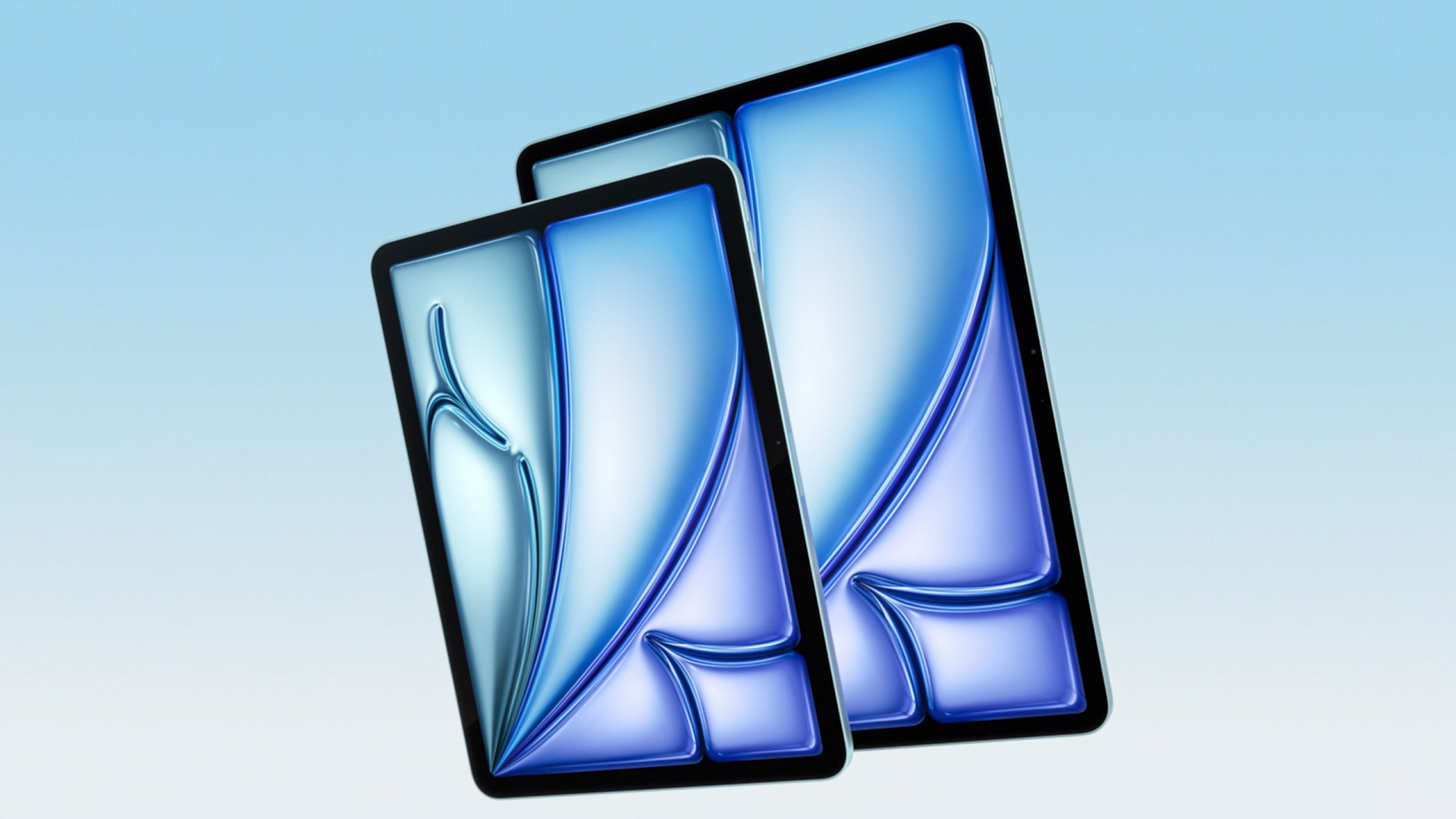
In addition to the new iPad Pro models, Apple also revealed two new iPad Air 2024 tablets. Like the Pros, these come in 11-inch and 13-inch varieties, but there the similarities end. There's no OLED screen tech, obviously – you wouldn't expect there to be – but it's possibly surprising that the chipset is Apple's M2, which debuted at WWDC 2022, rather than last year's M3.
Sign up for breaking news, reviews, opinion, top tech deals, and more.
On the other hand, that's still plenty fast enough for most uses, and will have helped to keep the price down to $599 / £599 / AU$999 for the 11-inch tablet and $799 / £799 / AU$1,299 for the 13.
And it's not like there's nothing new here, either. For one, there's the fact that the Air now comes in two sizes, for the first time. There's also a landscape-oriented front-facing camera – great for video calls – and landscape stereo speakers with spatial audio. It will also come with up to 1TB of storage, and will be available in Blue, Purple, Starlight and Space Grey. Given the sizable saving over the Pro models, it might well make more sense for most people.
3. The new Apple M4 chip is a powerhouse
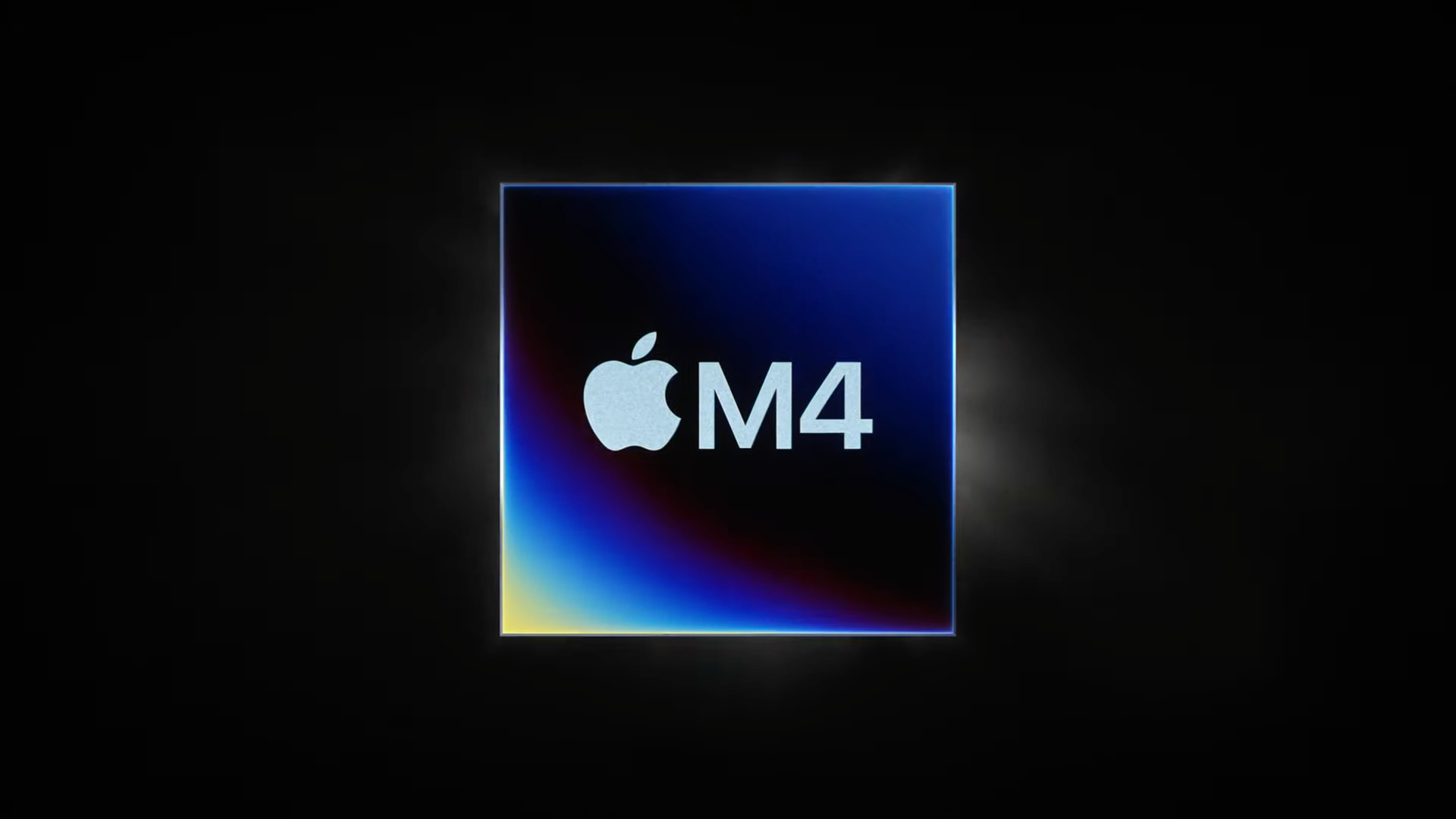
The iPad Pro has skipped a generation on the chipset front, moving from M2 to the new M4 – which arrives on Apple's tablet before it makes its way (presumably) into MacBooks and Macs later. That's a pretty big deal for the iPad, and it makes for a massive step up in power.
The M4 chip brings the likes of mesh shading, hardware ray tracing, and dynamic caching to the iPad, and has a 10-core CPU that Apple says is 50% faster than the M2. On the graphics side, meanwhile, the 10-core GPU is supposedly 400% faster than that of the M2. Yes, 400%.
And then there's AI, because of course no 2024 launch would be complete without it. Apple says the Neural Engine is capable of carrying out 38 trillion operations a second, making it one of the fastest NPUs on the market. This can only bode well for future AI-related advances from Apple.
4. Two OLED panels look better than one…
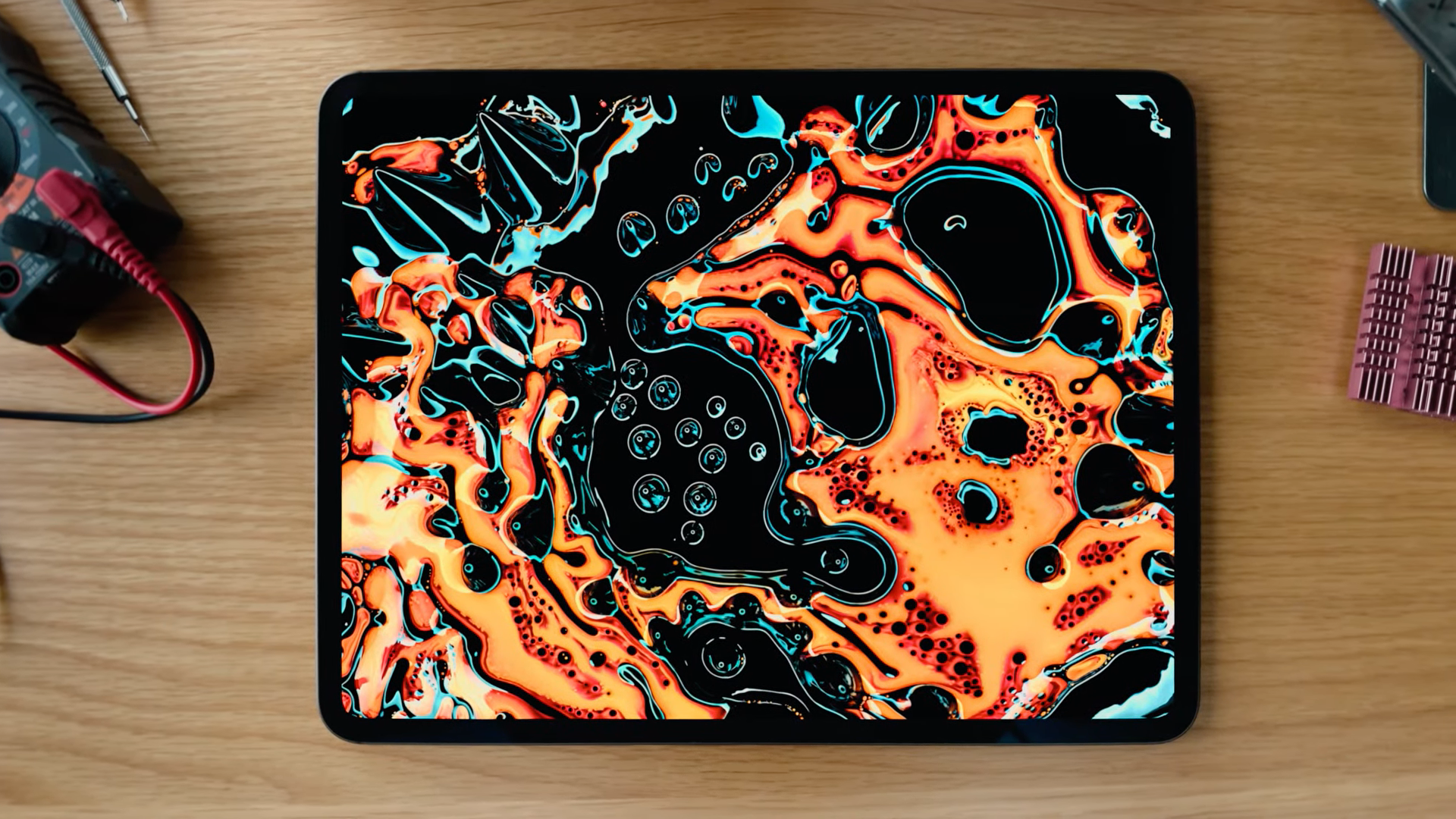
It’s taken a while, but Apple’s iPad Pro tablets finally have OLED displays – and they aren’t just any old OLED panels. Rather, Apple has created the ‘Tandem OLED’ display to form the ‘Ultra Retina XDR’ screen of the new Pro iPads.
Tandem OLED is so called because it puts two layers of OLED pixels on top of each other to create a single consistent screen. The benefit of this is to double the resolution of the screen while mitigating concerns around OLED burn-in.
While OLED pixels are self-emissive, they tend to struggle to hit the brightness of LCD or mini-LED panels, and to bump up the brightness more power needs to be pumped into the pixels. This increases the heat of an OLED display and can lead to the dreaded burn-in, whereby parts on a static image – think icons and taskbars – may be permanently visible on a screen, even when it's displaying something else.
However, by layering two OLED panels, the individual pixels can be run at a lower brightness than they would in a single-layer OLED screen yet still achieve a peak brightness of 1,600 nits in the new iPad Pros; that’s a lot higher than even some of the best OLED TVs.
This Tandem technique should also make for a more energy-efficient OLED screen that has a longer lifespan than traditional OLED displays. So, not only could Tandem OLED offer a boost in display quality over previous generation iPad Pros, it could also evolve OLED screen tech as a whole.
5. …but two OLED displays are approximately $200 more expensive than no OLED displays
There's good and bad news on the iPad pricing front. On the positive front, the iPad Air costs almost the same as the previous model: $599 / £599 / AU$999 for the base 11-inch model, which is unchanged from the 2022 version in the US, but a slight increase in the UK and Australia (where it was £569 / AU$929). However, you now get 128GB as standard, rather than 64GB.
What's more, there are now 512GB and 1TB versions – though the latter of those will set you back $1,099 / £1,099 / AU$1,879, by which time you're in Pro territory.
The bad news (pricing-wise) comes with the Pro, which now starts at $999 / £999 / AU$1,699 for the 11-inch model, compared to $799 / £899 / AU$1,399 for the 2022 model. Again, you get a storage upgrade, this time from 128GB to 256GB, but that's a hefty jump all the same.
On the other hand, you're getting an OLED screen here – and a 'Tandem OLED' screen at that (see number 4 above) – and the difference that should make can't be understated. Plus, it has the effect of further differentiating the two models; if you want to go cheap, you'll need to go Air.
Either way, the new iPads are available for preorders now, and will start shipping next week (15 May).
6. You'll want to squeeze the new Apple Pencil Pro
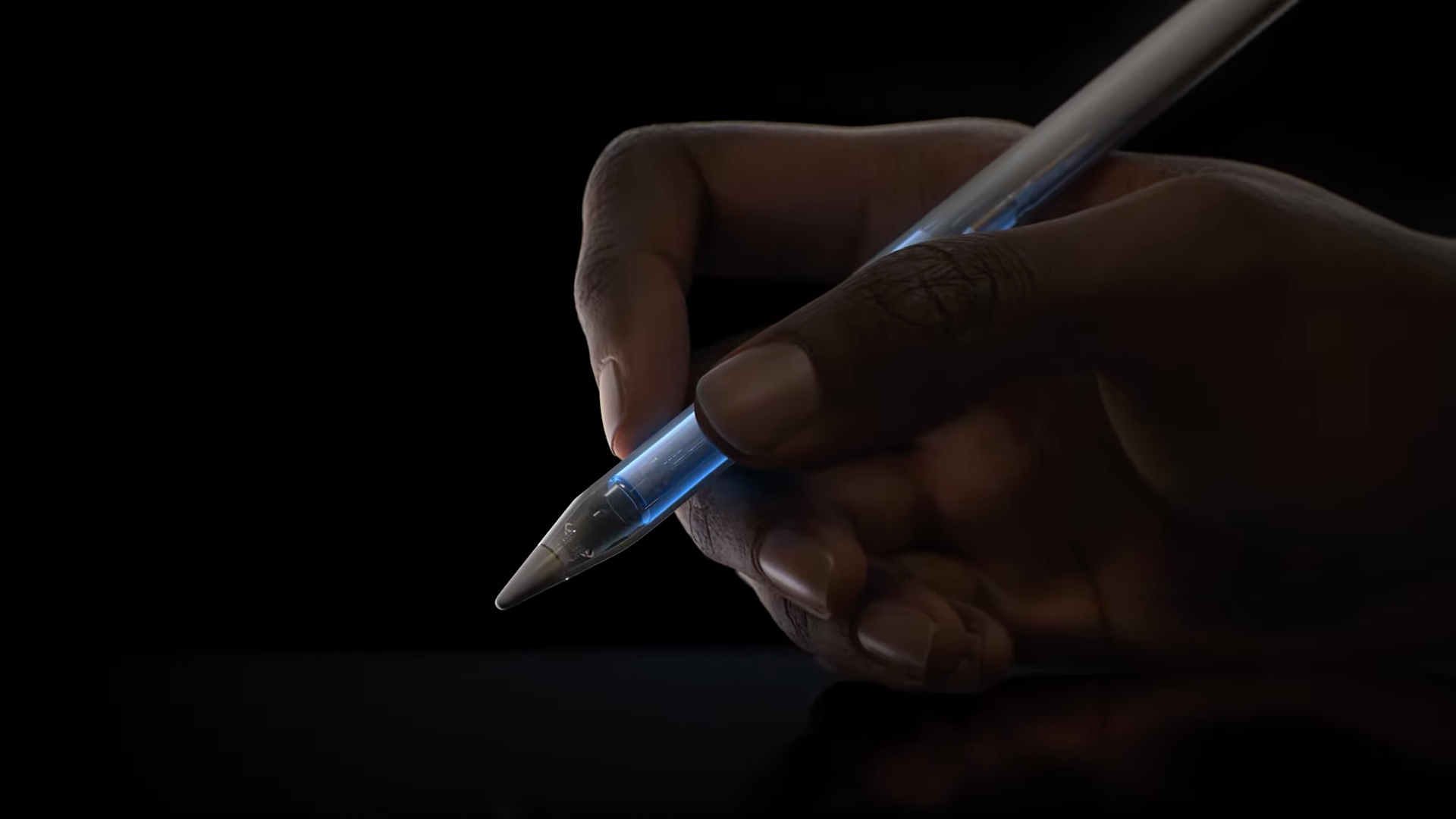
It almost goes without saying, but the Apple Pencil Pro looks like the most impressive iteration of the iconic stylus yet. Living up to the ‘Pro’ moniker, the new pencil offers a barrel sensor that allows you to squeeze the pencil to bring up a new wheel of tools and brushes on screen (in the same way you squeeze your AirPods to pause music), alongside haptic feedback.
Longtime users of the Apple Pencil will be pleased to know that the Pencil Pro will also finally support Find My – so (hopefully) no more losing your smart stylus. On the software front, meanwhile, Procreate and Procreate Dreams have also been prepped with a suit of new features just for the Apple Pencil Pro, including new brushes that take advantage of the barrel roll feature, plus the ability to hover and squeeze the pencil to select and swap between layers.
The Apple Pencil Pro charges and stores magnetically like older models, but it’s currently only compatible with the latest M2 iPad Air and M4 iPad Pro. Like the sound of it? It'll set you back $129 / £129 / AU$219, and will be available from May 15. We can’t wait to get our hands on it.
7. Apple has turned the iPad into a live multicam studio
Pro video shooters will now be looking even more seriously at the iPad as a live production tool, thanks to a couple of new Apple apps.
The updated Final Cut 2 app has a new Live Multicam mode, which lets you connect up to four cameras to it simultaneously. And helping video teams to take those shots is a new, free Final Cut Camera app for both iPhone and iPad. This connects to Final Cut 2 and lets you control the exposure, white balance, focus, and more on each camera, with those shots then transferred and synced to your iPad in the Final Cut app.
If you don’t want to bother with all of that, Final Cut Camera can also just be used as a new standalone iPhone app to help you shoot better videos with much finer control than the standard Camera app. Now we just need Apple to do the same for photography…
8. Function keys are back, back, back on the new Apple Magic Keyboard
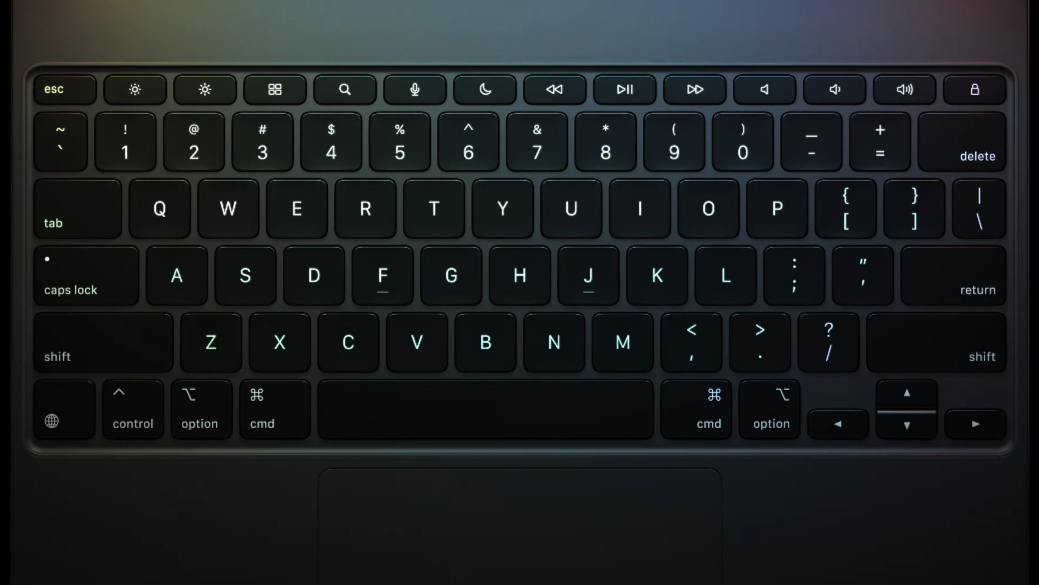
You can't underestimate the usefulness of function keys – though we'd prefer they weren't stuck on a Touch Bar as on certain older MacBooks. So it's good news that the new Apple Magic Keyboard has a row of function keys along the top, making it easier to control settings such as brightness and volume on your iPad Pro.
It'll cost $299 (approximately £240 or AU$450) for the 11-inch version, and $349 (approximately £280 or AU$530) for the 13-inch version, and will ship from May 15.
9. Apple's keeping back the big AI guns for WWDC… or is it?
It's possible you might have been a little disappointed that there was only a cursory mention of AI in today's Apple event. But don't be.
Apple is widely expected to (read: it will) reveal its own take on AI at its WorldWide Developers Conference next month, with the smart money being that it will unveil a raft of upgrades to iOS, iPadOS and macOS that will bring on-device generative AI to its entire mobile and computing lines.
But while there was nothing here about generative AI coming to the iPad or iPadOS, the M4 reveal is nonetheless a big part of the picture. The M4 chip should make it possible for the iPad (and MacBooks, at some point) to handle some big AI-related tasks, and indeed Apple gave the example of how Final Cut Pro will be easily able to isolate a background with just a tap. It also boasted that the M4's Neural Engine makes it "an outrageously powerful chip for AI".
These mentions indicate that Apple is planning for the AI revolution – and we can expect much, much more about it at WWDC 2024 in June.

Marc is TechRadar’s Global Editor in Chief, the latest in a long line of senior editorial roles he’s held in a career that started the week that Google launched (nice of them to mark the occasion). Prior to joining TR, he was UK Editor in Chief on Tom’s Guide, where he oversaw all gaming, streaming, audio, TV, entertainment, how-to and cameras coverage. He's also a former editor of the tech website Stuff and spent five years at the music magazine NME, where his duties mainly involved spoiling other people’s fun. He’s based in London, and has tested and written about phones, tablets, wearables, streaming boxes, smart home devices, Bluetooth speakers, headphones, games, TVs, cameras and pretty much every other type of gadget you can think of. An avid photographer, Marc likes nothing better than taking pictures of very small things (bugs, his daughters) or very big things (distant galaxies). He also enjoys live music, gaming, cycling, and beating Wordle (he authors the daily Wordle today page).
- Muskaan SaxenaComputing Staff Writer
- Hamish HectorSenior Staff Writer, News
- Kristina TerechComputing Writer
- Mark WilsonSenior news editor
- Roland Moore-ColyerManaging Editor, Mobile Computing